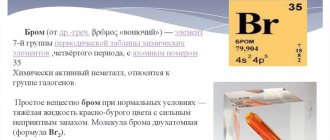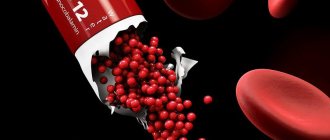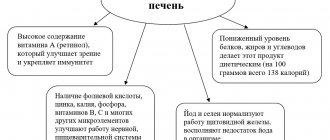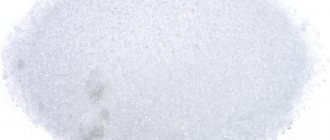IN 1
Vitamin B1, or thiamine, is a substance that catalyzes the biosynthesis of neuronal mediators. It is responsible for memory, concentration, cognitive functions, stress resistance. Thiamine is involved in the absorption of proteins, carbohydrates, and fatty acids.
Element deficiency causes the following conditions:
- chronic fatigue syndrome;
- depression;
- disturbances in brain activity;
- digestive disorders;
- heart problems.
Thiamine is found mainly in plant foods, but heat treatment reduces its concentration by half. Therefore, you should eat raw vegetables, fruits, and herbs. Sources of vitamin B1 include yeast, cereals, nuts, cereals, and whole grain bread. There is a lot of it in dried fruits, legumes, onions, herbs, cabbage, whole milk, cheese, eggs.
The absorption of thiamine is reduced by smoking, drinking coffee and sugar.
Summarize
- Pregnant women, older adults, vegans, and people with certain medical conditions may benefit from taking B-complex vitamins.
- Taking these supplements may also improve mood, cognitive function, and relieve symptoms of depression.
- Side effects are unlikely if you follow the recommended dosage, which depends on age, nutritional needs, gender and health.
- If you are unsure whether taking B vitamin supplements will benefit your health, talk to your doctor to help you determine if it is the right choice for you.
Tags: B vitamins
- Related Posts
- Lycopene: benefits, what products contain it
- Melatonin: benefits and harms, use, dosage
- Vitamin D deficiency: causes, symptoms, treatment, consequences
« Previous entry
AT 2
B2, or riboflavin, is a substance necessary for the division of nerve cells, hematopoiesis, and hemoglobin synthesis. It affects the secretion of the adrenal glands, is involved in maintaining twilight and peripheral vision, immunity, and healthy skin and mucous membranes.
Riboflavin deficiency has the following symptoms:
- digestive disorders;
- chronic conjunctivitis and cataracts;
- neurological disorders (muscle weakness, slow reactions, pain in the limbs, lack of coordination);
- anemia;
- decreased immunity;
- in children there is retardation in growth and development.
The main sources of vitamin B2 are red meat, seafood, fish, egg whites, cheeses, dairy products, lettuce, wheat, buckwheat, and oats. The absorbable form of riboflavin comes from animal foods, so strict vegetarianism can lead to a deficiency.
Beneficial features
Pyrrole-quinoline-quinol has a positive effect on most human organs and systems. For the nervous system, it helps speed up the normalization and restoration of nerve tissue after stress.
Heart
Vitamin B14 helps improve oxygen saturation of the heart muscle, which has a beneficial effect on human cardiac activity and protects against the occurrence of hypoxia and ischemia. Regular intake of methoxanthin into the body stimulates the function of the gonads to produce hormones in a normal volume, which is especially important for the health of women while expecting a child and the proper development and growth of the fetus.
Vision
The use of a beneficial substance is considered a measure to prevent cataracts and clouding of the eye lens. Vitamin B14 helps the liver neutralize the negative effects of heavy fatty foods and alcohol, and reduces the risk of cirrhosis of the organ.
Antioxidant
Vitamin B14 is an antioxidant that actively helps the body fight carcinogens and free radicals, which helps prolong youth and prevent the formation of cancer cells.
Blood
When a sufficient amount of vitamin enters the body, the duration of the functioning of red blood cells, which are responsible for supplying cells throughout the body with oxygen, increases. Vitamin B14 is involved in redox reactions and also serves as protection for the structure of DNA and RNA from negative influences.
Immunity
A sufficient level of the beneficial substance in the body helps to significantly strengthen the immune system and increase defenses by increasing the activity of lymphocytes. Indications for use
B3 (RR)
B3, PP, niacin, nicotinic acid - all these are names for the same substance. Its functions in the body are difficult to overestimate. Niacin is involved in the metabolism of lipids and proteins, regulates cholesterol levels, affects cerebral circulation, and accelerates the elimination of toxins. In addition, it maintains normal hormonal balance, sexual functions, and constant sugar levels.
B3 deficiency has the following consequences:
- sleep disorders;
- anemia;
- dystrophy;
- memory loss;
- increased fatigue.
Vitamin B3 enters the body mainly from animal foods. Its most valuable sources are lean meat, beef and chicken liver, and salmon fish. Its predecessors are found in red and black caviar, hard cheese, and nuts. If you follow a vegetarian diet, you can replenish your niacin reserves by eating soy, sunflower seeds, almonds, pine nuts, garlic, bell peppers, herbs, and mushrooms.
B vitamins: functions, application, deficiency and what foods they contain
Vitamin B1 (thiamine)
Vitamin B1 (thiamine) is a crystalline, colorless substance, highly soluble in water and insoluble in alcohol.
It is destroyed in an alkaline environment, but tolerates heat well. The role of thiamine in human life. Thiamine plays an important role in the metabolism of proteins, fats, carbohydrates and other substances. Participates in hematopoiesis, maintaining the normal functioning of the brain, cardiovascular, digestive and nervous systems. Promotes normal growth and development of the child. Performs a protective function against the negative effects of smoking products and alcoholic beverages on the body. Prevents premature aging.
Symptoms of thiamine deficiency in the body (hypovitaminosis): disturbances in the nervous system (insomnia, irritability, stress, depression), cardiovascular system (tachycardia and other arrhythmias, arterial hypotension), gastrointestinal tract (nausea, constipation, diarrhea), anorexia.
Severe thiamine deficiency (vitaminosis): can lead to the development of beriberi disease.
Sources of Thiamine
Vegetable: rice, oatmeal, sunflower seeds, peanuts, pine nuts, soybeans, pistachios, millet, wheat bran, compressed yeast. Animals: beef, poultry, liver, fish, egg yolk. Chemical: Thiamine chloride, multivitamin complexes. Synthesis in the body: Synthesized in the colon by certain beneficial bacteria.
Vitamin B2 (riboflavin)
Vitamin B2 (riboflavin) - needle-shaped, drusy crystals, yellow-orange in color, poorly soluble in water and ethanol, and completely insoluble in acetone, benzene, diethyl ether and chloroform.
Rapidly degrades when exposed to light and alkali. The role of riboflavin in human life. Riboflavin plays an important role in the metabolism of proteins, fats and carbohydrates, as well as hematopoiesis, respiratory function of skin cells, hair and nails. Along with vitamin A, riboflavin is involved in maintaining the visual function of the eyes, especially in rooms with poor lighting, and is a preventive substance against the development of cataracts. Helps protect the mucous membrane of the respiratory system, which is especially important during periods of active respiratory infections. Riboflavin accelerates the processes of regeneration of body tissues after injury or surgery. Promotes the body's absorption of vitamin B6.
Symptoms of riboflavin deficiency in the body (hypovitaminosis): headaches and dizziness, loss of appetite and weight loss, increased photosensitivity, oily or super-dry skin, irritability, depression, insomnia, decreased mental activity, skin rashes, tremors of the limbs, as well as deterioration of tactile sensitivity.
Acute lack of riboflavin (vitaminosis): increased hair loss, dermatitis, anemia, pellagra, changes in the cornea of the eye, cataracts, frequent conjunctivitis.
Sources of Riboflavin
Vegetable: brewer's yeast, soybeans, cocoa (powder), almonds, bran, wheat shoots, turnips, tea. Animals: lamb, beef, heart, liver, kidneys, dairy and fermented milk products, egg powder. Chemical: “Riboflavin”, “Flavinate”, multivitamin complexes. Synthesis in the body: synthesized in the colon by some beneficial bacteria (microflora).
Vitamin B3 (niacin, nicotinic acid, nicotinamide, vitamin PP)
Vitamin B3 (niacin, nicotinic acid, nicotinamide) is a white powder with a crystalline structure, slightly soluble in cold water, slightly better in hot water, poorly soluble in ethanol and almost insoluble in ether.
The role of nicotinic acid (niacin) in human life. Nicotinic acid takes part in the metabolism of proteins, fats and carbohydrates, amino acids, tissue respiration, and regulation of redox processes in the body. Nicotinic acid is necessary for the normal functioning of the digestive system - it promotes the release of energy from food. In addition, niacin lowers the level of “bad” cholesterol in the blood, has a dilating effect on small blood vessels, is involved in the synthesis of sex hormones, insulin, cortisone and thyroxine, accelerates recovery after myocardial infarction and helps in the fight against cancer.
Read also: Which foods increase blood pressure?
Symptoms of nicotinic acid deficiency in the body (hypovitaminosis): increased fatigue, depression, impaired brain function, heartburn, lack of appetite, nausea, indigestion, skin diseases, pain and aches in the limbs, increased sensitivity of the gums.
Sources of niacin
Vegetable: yeast, peanuts, almonds, whole grains and whole grain products, green peas, ginseng, mushrooms, carrots, broccoli, tomatoes, potatoes, horsetail, nettles, parsley, rose hips, sorrel.
Animals: beef liver, heart, poultry, fish, milk, cheese, eggs.
Chemical: “Nicotinamide”, “Nicotinic acid (vitamin PP)”, “Nikoverin”, multivitamin complexes.
Synthesis in the body: synthesized in the intestines provided that vitamins B2, B6, as well as tryptophan are supplied with food.
Vitamin B5 (pantothenic acid)
Vitamin B5 (pantothenic acid) is a water-soluble vitamin that is destroyed by heat treatment - heating or freezing.
They are also destroyed during canning. The role of pantothenic acid in human life. Pantothenic acid, like other B vitamins, plays an important role in the metabolism of proteins, fats and carbohydrates, the formation of antibodies, and the synthesis of corticosteroids. It promotes the production of energy by cells, prevents premature aging, maintains the health and normal appearance of the skin, helps in the treatment of skin and cardiovascular diseases, and promotes tissue regeneration after injury or surgery. Pantothenic acid also helps in the fight against diseases such as arthritis, allergies, acne, colitis.
Symptoms of pantothenic acid deficiency in the body (hypovitaminosis): skin problems (dermatitis, eczema, vitiligo, flabbiness), dysfunction of the nervous system (insomnia, depression, impaired coordination of movements), ulcers, increased fatigue, involuntary abortions in the early stages, increased hair loss hair, tingling and numbness in the arms and legs, blood diseases.
Sources of pantothenic acid
Vegetable: oranges, bananas, avocados, peanuts, nuts, yeast, bran, soybeans, lentils, oatmeal, green parts of vegetables (tops). Animals: liver, kidneys, poultry, fish, raw egg yolk, dairy products. Chemical: “Calcium pantothenate”, “Supradin”, multivitamin complexes. Synthesis in the body: synthesized by intestinal microflora with adequate nutrition, mainly food enriched with vitamins.
Vitamin B6 (pyridoxine)
Vitamin B6 (pyridoxine, pyridoxal, pyridoxamine, pyridoxal phosphate) - colorless crystals, highly soluble in water and alcohol, and also insoluble in ether and fatty solvents.
Pyridoxine and its derivatives are resistant to heat treatment and oxygen, and are destroyed when exposed to light. The role of pyridoxine in human life. Participates in the metabolism of proteins, fats and carbohydrates, macroelements, the synthesis of adrenaline, serotonin, dopamine, histamine, hemoglobin and other substances. Necessary for the normal functioning of the central and peripheral nervous system, maintaining the balance of sex hormones in women. Regulates cholesterol levels in the blood, thereby preventing atherosclerosis, and hence heart attack, stroke and other diseases of the cardiovascular system. Participates in hematopoiesis, normalizes blood pressure, improves brain activity and memory. Has a beneficial effect on hair growth and health.
Symptoms of pantothenic acid deficiency in the body (hypovitaminosis): irritability, anxiety, depression, insomnia, appetite disturbances, nausea, vomiting, dermatitis, seborrhea, stomatitis, conjunctivitis, tendency to acute respiratory infections.
Sources of pyridoxine
Vegetable: oranges, lemons, bananas, avocados, pitaya, cherries, strawberries, green leafy vegetables, yeast, rice, buckwheat and wheat cereals, various nuts, carrots, potatoes, tomatoes, cabbage, plantain. Animals: liver, kidneys, heart, fish, eggs, dairy products. Chemical: Pyridoxine hydrochloride. Synthesis in the body: synthesized by intestinal microflora with adequate nutrition.
Vitamin B7 (biotin, vitamin H, coenzyme R)
Vitamin B7 (biotin, vitamin H, coenzyme R) is a vitamin that is highly soluble in water, alcohol and alkali.
Destroys at high temperatures. Resistant to light (ultraviolet rays). The role of biotin in human life. Biotin is actively involved in the metabolism of fats, proteins and carbohydrates, the biosynthesis of hormones, and the synthesis of beneficial microflora in the intestines. Regulates blood sugar levels. Supports the health of the nervous system, skin, hair and nails. Participates in the processes of activation of vitamin C.
Symptoms of biotin deficiency in the body (hypovitaminosis): skin problems (flabbiness, dryness, dermatitis, eczema), increased hair loss, dandruff, nail problems, depression, drowsiness, hypotension (low blood pressure), increased fatigue.
Biotin Sources
Vegetable: green peas, peanuts, whole rye grains, brown rice and rice bran, corn, tomatoes, carrots, potatoes, white cabbage and cauliflower, onions, spinach, apples, melon, oranges, bananas. Animals: liver, heart. Beef, chicken, milk, cheese, fish (salmon, sardines, herring), egg yolks. Chemical: Biotin. Synthesis in the body: synthesized by intestinal flora, subject to proper nutrition and good health.
Vitamin B9 (folic acid, vitamin M, vitamin Bc)
Vitamin B9 (folic acid, vitamin M, vitamin Bc) is a yellowish or yellowish-orange crystalline powder, poorly soluble in water and alcohol, easily soluble in alkali, and is destroyed by exposure to sunlight.
The role of folic acid in human life. Folic acid plays an important role in hematopoiesis, maintaining the proper functioning of the immune system and digestive organs. Participates in the metabolism of fats and carbohydrates, DNA and protein synthesis, redox processes. Regulates the course of pregnancy and normal development of the fetus. Promotes accelerated cell regeneration, helps in the fight against depression and other nervous system disorders. Reduces the risk of developing diseases of the cardiovascular system - atherosclerosis, heart attack, stroke. Promotes the body's absorption of other B vitamins.
Symptoms of folic acid deficiency in the body (hypovitaminosis): impaired fertility in men, impaired fetal development, anemia, anorexia, nausea, lack of appetite, nervous system disorders (depression, irritability, anxiety, stress), arrhythmias, increased fatigue.
Acute folic acid deficiency (vitaminosis) can lead to the development of megaloblastic anemia, and even death.
Sources of folic acid
Vegetable: cabbage, lettuce, onions, cereals, legumes, yeast, pomelo, oranges, grapefruits, bananas, nuts, mushrooms, dates. Animals: lamb, beef, poultry, liver, fish, milk, eggs. Chemical: “Folic acid”, multivitamin complexes. Synthesis in the body: synthesized by the microflora of the colon, especially with additional intake of bifidobacteria.
Read also: Pale skin - causes and treatment
Vitamin B12 (cyanocobalamin, cobalamins)
Vitamin B12 (cobalamins, cyanocobalamin) is a group of cobalt-containing substances, which are a powder with a crystalline structure, dark red in color, odorless, soluble in water, resistant to sunlight and heat.
The role of cyanocobalamin in human life. Cyanocobalamin plays an important role in hematopoiesis, normal growth and development of the child, maintaining the normal functioning of the nervous system, and reproductive function. Prevents premature aging, dementia, impaired brain activity, and the development of anemia (anemia). In addition, cobalamins strengthen the immune system, normalize blood pressure, and give the body strength and vigor. Necessary for the body to absorb folic acid.
Symptoms of cyanocobalamin deficiency in the body (hypovitaminosis): pathological processes in patients with HIV infection are accelerated, the activity of the brain, nervous system, digestive system, and visual function is disrupted. The risk of developing gastric ulcers increases.
Sources of cyanocobalamin
Vegetable: seaweed, yeast, hops, soybeans and soy products. Animals: liver, heart, kidneys, brains, beef, poultry, fish, dairy products, eggs. Chemical: multivitamin complexes. Synthesis in the body: synthesized by microflora in the digestive organs with adequate nutrition.
AT 4
B4, or choline, is a conditional vitamin because it is synthesized in sufficient quantities in the liver and intestines. It is involved in the synthesis of neurotransmitters, regulates insulin levels, and resists depression.
Choline deficiency has a number of symptoms:
- sexual impotence;
- weight fluctuations;
- decreased mental abilities;
- emotional instability.
In food it is found in eggs, legumes, fermented milk products, cereals, fish, cabbage.
Instructions for use of vitamin B14
In pharmacies, pyrroloquinoline quinone is offered mainly as part of complex vitamin supplements. Therefore, there is no single use regimen for B14; the instructions depend on which particular drug is used to strengthen the body. You can find vitamin B14 in the form of tablets or capsules with a gelatin shell - the substance is not sold in liquid form, since it belongs to the category of water-soluble and quickly loses its beneficial properties in liquid.
In general, vitamins containing B14 are usually taken once a day on a full stomach, immediately after meals. It is believed that PQQ is best absorbed in the morning. For quick absorption, vitamins are washed down with plenty of water.
Important! B14 combines well with other vitamins and can be taken simultaneously with any medications. If necessary, coenzyme PQQ can replace vitamins C, B2 and B6.
AT 5
B5, or pantothenic acid, is a substance that is necessary for tissue regeneration and blood renewal. It is involved in the breakdown of fats and carbohydrates and the production of hemoglobin.
B5 deficiency has the following consequences:
- sleep disorders;
- metabolic disorders;
- pathologies of the gastrointestinal tract, central nervous system and cardiovascular system.
Plant sources of vitamin B5 are whole grains, tree nuts, green vegetables, beans, mushrooms, bran. Pantothenic acid contains eggs, kidneys, liver, and dairy products.
Vitamin-like compounds of group B
Vitamin B4 (choline, vitamin BP)
Vitamin B4 (choline, vitamin BP) is a vitamin-like substance that is colorless hygroscopic crystals, highly soluble in water, ethanol, poorly soluble in acetone, amyl alcohol and chloroform, and completely insoluble in benzene, diethyl ether and carbon disulfide.
It also collapses when heated from +70°C. Choline and its derivatives are used as a dietary supplement and are designated as E1001. The role of choline in human life. Choline plays an important role in the metabolism of fats, proteins and carbohydrates, as well as maintaining the normal functioning of the brain, liver, kidneys, nervous system, and human reproductive function. Promotes accelerated recovery of the liver and the entire body as a whole after alcohol intoxication, as well as other types of poisoning. Choline improves memory, regulates blood cholesterol levels, as well as insulin levels. Prevents the appearance of gallstones, prevents premature aging, and normalizes the functioning of the digestive system.
Symptoms of choline deficiency in the body (hypovitaminosis): disorders of the nervous system (depression, stress, irritability, insomnia), memory impairment, high blood pressure, tendency to gastritis, increased fatigue, varicose veins, slow growth.
Sources of Choline
Vegetable: legumes, bran, yeast, carrots, cabbage, tomatoes. Animals: beef, liver, kidneys, heart, fish, egg yolk, dairy products. Chemical: Choline chloride. Synthesis in the body: synthesized by the body with adequate nutrition, as well as the absence of chronic diseases.
Vitamin B8 (inositol, inositol, inositdroretinol)
Vitamin B8 (inositol, inositol, inositdroretinol) is a vitamin-like substance, which is a crystalline powder, sweetish in taste, highly soluble in water, insoluble in alkalis and acids, and is destroyed when heated.
The role of inositol in human life. Inositol is part of many enzymes and plays an important role in regulating metabolism and blood cholesterol levels. Inositol helps in the fight against obesity, diseases of the cardiovascular system (atherosclerosis, thrombophlebitis, myocardial infarction, hypertension). Improves brain activity and memory. Normalizes the functioning of the nervous system - improves sleep, helps in the fight against depression. Promotes normal functioning of the gastrointestinal tract and maintains healthy hair. Supports human reproductive health. Extremely important for normal growth, development and health of bones and muscle tissue, which is especially important for children and adolescents.
Symptoms of inositol deficiency in the body (hypovitaminosis): nervous system disorders (depression, stress, irritability, insomnia), increased hair loss, high blood pressure, constipation, disorders in the development of bones and muscles (dystrophy), skin diseases (psoriasis, dermatitis, eczema ), tendency to obesity, deterioration of concentration and memory.
Sources of Inositol
Vegetable: wild rice, legumes, barley, wheat germ and bran, nuts, sesame, yeast, potatoes, carrots, cabbage, tomatoes, citrus fruits, watermelon, melon, blackberries, gooseberries, raisins. Animals: liver, heart, kidneys, brains, fish, caviar. Chemical: "Inositol forte". Synthesis in the body: 75% of vitamin B8 is synthesized by the body with a nutritious diet, with a predominance of vitamin-fortified foods.
Vitamin B10 (para-aminobenzoic acid, PABA, vitamin H1)
Vitamin B10 (para-aminobenzoic acid, PABA, PABA, n-aminobenzoic acid, vitamin H1) is a vitamin-like substance - an amino acid, which is a whitish crystalline powder, poorly soluble in water, highly soluble in ethyl alcohol and ether, destroyed when heated from 187 ° C .
The role of para-aminobenzoic acid in human life. PABA plays an important role in hematopoiesis (the formation of red blood cells), the synthesis of folic acid, the metabolism of proteins and fats, the normal functioning of the thyroid gland, and the production of breast milk by a nursing mother. PABA stimulates the body's production of interferon, due to which it indirectly helps protect the body from infectious diseases - acute respiratory infections, acute respiratory viral infections, influenza, hepatitis, as well as allergies and sunburn. Used in anti-wrinkle cosmetics as well as sun protection products. Supports hair growth and health. Used in the treatment of skin diseases. Prevents the development of blood clots and malignant tumors. Stimulates the production of beneficial microflora in the intestines.
Symptoms of para-aminobenzoic acid deficiency in the body (hypovitaminosis): skin problems (dermatitis, eczema, dryness or oiliness), rapid onset of sunburn in a short time in the sun, insufficient milk during breastfeeding, frequent stomach upsets, headaches and dizziness , deterioration in blood quality, disturbances in the development of bones and muscle tissue.
Sources of para-aminobenzoic acid
Vegetable: rice bran, yeast, nuts, wholemeal wheat flour, mushrooms, vegetables, black seeds, parsley, lemon balm. Animals: liver, fish, dairy products, eggs. Chemical: “Multivit”, “Vitrum”. Synthesis in the body: synthesized by the body with adequate nutrition, with a predominance of food enriched with vitamins and microelements.
Vitamin B11 (carnitine, L-carnitine, vitamin Bt)
Vitamin B11 (carnitine, L-carnitine, levocarnitine, vitamin gamma, vitamin Bt) is a vitamin-like substance, which is a white crystalline powder, easily soluble in water and hot alcohol, poorly soluble in acetone, ether and benzene, destroyed when heated from 195 °C.
The role of carnitine in human life. Carnitine, or rather its “L” form (L-carnitine), plays an important role in fat metabolism and providing cells with energy. It is often used by fitness trainers to combat extra pounds, boost energy, and give strength in sports. This substance literally burns fat from the muscle tissue of the body. Used as a prophylactic against cardiovascular diseases. Regulates blood cholesterol levels. Normalizes the activity of the nervous system, removes toxins from the body, promotes tissue regeneration after damage.
Read also Joint pain (arthralgia) - causes, types, symptoms and treatment of joint pain
Symptoms of carnitine deficiency in the body (hypovitaminosis): increased fatigue, loss of strength, high blood pressure, obesity, irritability.
Sources of carnitine
Vegetable: yeast, sesame seeds, pumpkin, avocado. Animals: beef, lamb, fish, poultry, dairy products, eggs. Chemical: “L-carnitine”, “Carnitene”, vitamin complexes. Synthesis in the body: synthesized by the body with adequate nutrition, with a predominance of food enriched with vitamins and microelements, especially B3, B6, B9, B12, C, iron and others.
Vitamin B13 (orotic acid, orotate)
Vitamin B13 (orotic acid, orotate) is a vitamin-like substance, which is a white crystalline powder, poorly soluble in water and organic solvents, and is destroyed when exposed to sunlight.
The role of orotic acid in human life. Orotic acid is part of all living cells of the body, plays an important role in the synthesis of protein, fats and other substances, maintaining the normal functioning and health of the liver, and normal fetal development during pregnancy. Supports the functionality of human reproductive function. Promotes normal growth and development of the fetus and children. Prevents cardiovascular diseases, regulates cholesterol levels in the blood. Promotes hematopoiesis, prevents premature aging. Necessary for the body to absorb vitamins B5, B9 and B12.
Symptoms of orotic acid deficiency in the body (hypovitaminosis): high blood pressure, dry skin, dermatoses, increased fatigue, developmental disorders in children.
Sources of orotic acid
Vegetable: yeast, root vegetables. Animals: liver, dairy products. Chemical: "Potassium orotate". Synthesis in the body: synthesized by the body with adequate nutrition, with a predominance of food enriched with vitamins and microelements.
Vitamin B14 (pyrroloquinoline quinone, methoxanthin, coenzyme PQQ)
Vitamin B14 (pyrroloquinoline quinone, methoxanthin, coenzyme PQQ) is a vitamin-like substance, which is a small quinone molecule that acts as a redox agent.
Let's dissolve well in water. The role of pyrroloquinoline quinone in human life. Pyrroloquinoline quinone prevents disorders of mental function and brain activity in the elderly, supports the functioning of the nervous system, stimulates the functioning of the immune system, and promotes the normal functioning of the human reproductive system. Has antioxidant properties.
Symptoms of pyrroloquinoline quinone deficiency in the body (hypovitaminosis): impaired concentration and memory in old age.
Sources of Pyrroloquinoline Quinone
Vegetable: soybeans, spinach, rapeseed flowers, field mustard, green tea, bell pepper, parsley, carrots, tomatoes, potatoes, kiwi, bananas, papaya, apples. Synthesis in the body: synthesized by the body into breast milk with adequate nutrition, with a predominance of food enriched with vitamins and microelements.
Vitamin B15 (pangamic acid, calcium pangamate)
Vitamin B15 (pangamic acid, calcium pangamate) is a vitamin-like substance, which is a white or egg-white hygroscopic powder, highly soluble in water, in which it is destroyed, but insoluble in alcohol.
Destroys when heated and exposed to light. The role of pangamic acid in human life. Pangamic acid plays an important role in the synthesis of various substances important for the normal functioning of the body (creatine, phospholipids, etc.), regulating cholesterol levels in the blood, and stimulating the production of adrenal hormones. Protects the liver from fibrosis and cirrhosis. Promotes tissue respiration, cell regeneration, and removal of poisoning products from the body. Pangamic acid has a vasodilating effect and prevents the development of infectious and cardiovascular diseases.
Symptoms of pangamic acid deficiency in the body (hypovitaminosis): increased fatigue, irritability, stress, depression, oxygen starvation of tissues, cardiovascular diseases, premature aging (wrinkles and graying).
Sources of Pangamic Acid
Vegetable: apricot kernels, nuts, almonds, plant seeds (pumpkin, sunflower, sesame), wheat, brown rice (whole), wheat, watermelon, cantaloupe. Animals: liver. Chemical: “Calcium pangamate”. Synthesis in the body: synthesized by the body with adequate nutrition, with a predominance of food enriched with vitamins and microelements.
Vitamin B16 (dimethylglycine, DMG)
Vitamin B16 (dimethylglycine, DMG) is a vitamin-like substance that is an intermediate between choline and glycine.
Let's dissolve well in water. The role of dimethylglycine in human life. Dimethylglycine plays an important role in the metabolism of proteins, carbohydrates and other substances, is present in DNA, participates in the processes of hormone secretion, has detoxifying properties, stimulating the elimination of alcohol poisoning products from the body, as well as other intoxication products. Stimulates the functioning of the immune system, promotes the enrichment of oxygen in tissues, as well as cell regeneration. Regulates cholesterol and glucose levels in the blood, normalizes blood pressure. Helps in protecting the body from various diseases against the background of reduced immunity. It has a beneficial effect on the body during high physical and mental stress. It is used in the treatment of diseases such as epilepsy, autism, multiple sclerosis, pneumonia, chronic hepatitis, Leigh syndrome.
Symptoms of dimethylglycine deficiency in the body (hypovitaminosis): impaired concentration and memory, increased fatigue, nervousness, irritation.
Sources of Dimethylglycine
Vegetable: peanuts, almonds, walnuts, rice, buckwheat, yeast, plant seeds (sunflower, pumpkin, sesame). Animals: poultry, liver, fish (sea), milk, eggs. Chemical: “Glycine”, “Hypoxen”, “Actovegin”. Synthesis in the body: no data.
Vitamin B17 (amygdalin, laetral, letril)
Vitamin B17 (amygdalin, laetral, letril) is a vitamin-like substance that is a compound of benzenedehyde and cyanide (sugar molecules).
Let's dissolve well in water. The role of amygdalin in human life. Amygdalin, according to unconfirmed data (WHO), has anti-cancer properties, for which it is mainly used by traditional healers. Amygdalin gained the greatest popularity thanks to the American documentary writer Edward Griffin, who wrote the book “A World Without Cancer.” It has also been noted that vitamin B17 prevents premature aging and strengthens the immune system. According to some reports, amygdalin can be used in the treatment of diseases such as anemia, pellagra, scurvy,
Symptoms of amygdalin deficiency in the body (hypovitaminosis): increased fatigue.
AT 6
B6, or pyridoxine, is a vitamin that regulates the functioning of enzymes and is used at all stages of metabolism. It is necessary for the absorption of proteins, fats, and the synthesis of neurotransmitters. B6 is involved in the transfer of genetic information during cell division.
Vitamin deficiency is accompanied by the following symptoms:
- drowsiness and irritability;
- anemia;
- disruptions of the immune system;
- deterioration of skin condition.
The main sources of pyridoxine are poultry, beef liver, pork, pine nuts, buckwheat, potatoes, strawberries, cherries, lemon, pomegranate, oranges.
B7 (H)
B7, or biotin, is a vitamin necessary for the synthesis of proteins, the breakdown of fats, and the metabolism of sugars. It interacts with digestive enzymes and ensures all metabolic processes. Its action is suppressed by alcohol, sweeteners, and antibiotics.
Vitamin deficiency is associated with the following conditions:
- muscle pain;
- sleep disorders;
- high sugar;
- high cholesterol;
- metabolic disorders;
- anemia;
- inflammation of the skin;
The main sources of biotin are soybeans, peas, beans, peanuts, hazelnuts, cauliflower, mushrooms, boiled eggs, kidneys and liver, brewer's yeast. Normally, healthy intestinal microflora produces it in sufficient quantities.
In food
Food products are considered one of the main sources of methoxanthin:
- fermented soybeans;
- parsley;
- soy cheese tofu;
- kiwi;
- white cabbage;
- spinach;
- oranges;
- peas;
- carrot;
- papaya;
- liver;
- beans;
- potato;
- apples;
- Green pepper;
- bananas;
- celery;
- wholemeal bread;
- tomatoes;
- dill.
Vitamin B14 is found in green tea, grape juice and oolong black tea, as well as in drinks containing alcohol - whiskey, red wine, sake.
Popular Japanese dishes - miso soups, rolls and sushi are rich in vitamin B14 and antioxidants.
The substance is resistant to high temperatures, therefore, during heat treatment it retains its beneficial properties in full.
AT 9
B9, or folic acid, is a vitamin necessary for the synthesis of nucleic acids and the transmission of heredity. Therefore, it plays a special role during pregnancy. Folic acid is necessary for the production of leukocytes and red blood cells, the development and normal functioning of the nervous system, and protein metabolism.
Deficiency has the following consequences:
- blood diseases;
- gastrointestinal pathologies;
- during pregnancy - deformity, defects in the development of the neural tube, congenital defects in the fetus.
Lack of folic acid can occur during the use of oral contraceptives. Therefore, when planning a pregnancy, you should stop taking such drugs a month before trying to conceive.
Vitamin B9 is found in legumes, tomatoes, potatoes, brown bread, beets, and egg yolks. During pregnancy, it is prescribed additionally in dosage form.
B10
B10, or para-aminobenzoic acid, is a vitamin-like substance that activates intestinal flora, promotes protein absorption, red blood cell synthesis and maintains healthy skin.
Vitamin deficiency leads to the following conditions:
- anemia, fatigue, weakness;
- skin forms of allergic reactions;
- dysbacteriosis;
- early gray hair and baldness;
- developmental delay in children;
- joint diseases.
Sources of para-aminobenzoic acid are mushrooms, molasses, yeast, bran, nuts, sunflower seeds, carrots, potatoes, parsley, spinach, eggs, dairy products.











